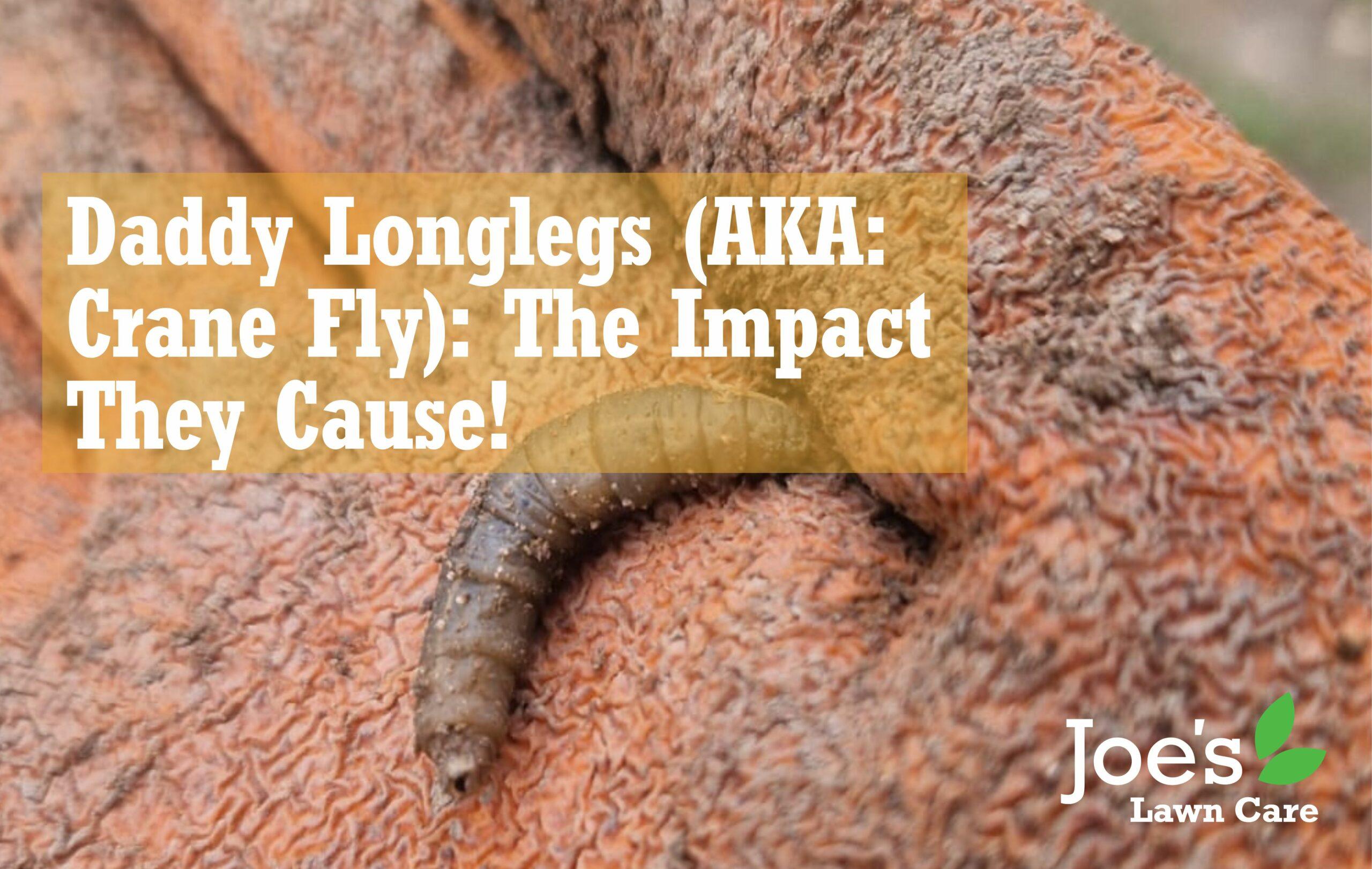Daddy Long Legs (technical name: Crane Fly) What They Are, The Impact They Cause On Your Lawn and How Joe’s Can Help!
Thanks for tuning in for Daddy Longlegs (AKA: Crane Fly): The Impact They Cause On Your Lawn!
Hey there, lawn lovers! It’s Joe from Joe’s Lawn Care, and today we’re diving into a critter that might be sneaking around your garden without you even knowing: crane flies, also known as daddy longlegs. No, they’re not spiders (phew!), but they can be a major pain in the grass! Let’s break down what you need to know about these pesky insects, how they can wreck your beautiful lawn, and how we can help save the day with our special treatment.

What Exactly Are Crane Flies?
Crane flies look like giant mosquitoes, but don’t worry—these guys won’t be sucking your blood at the backyard BBQ! They’re harmless to humans but can be seriously bad news for your lawn.
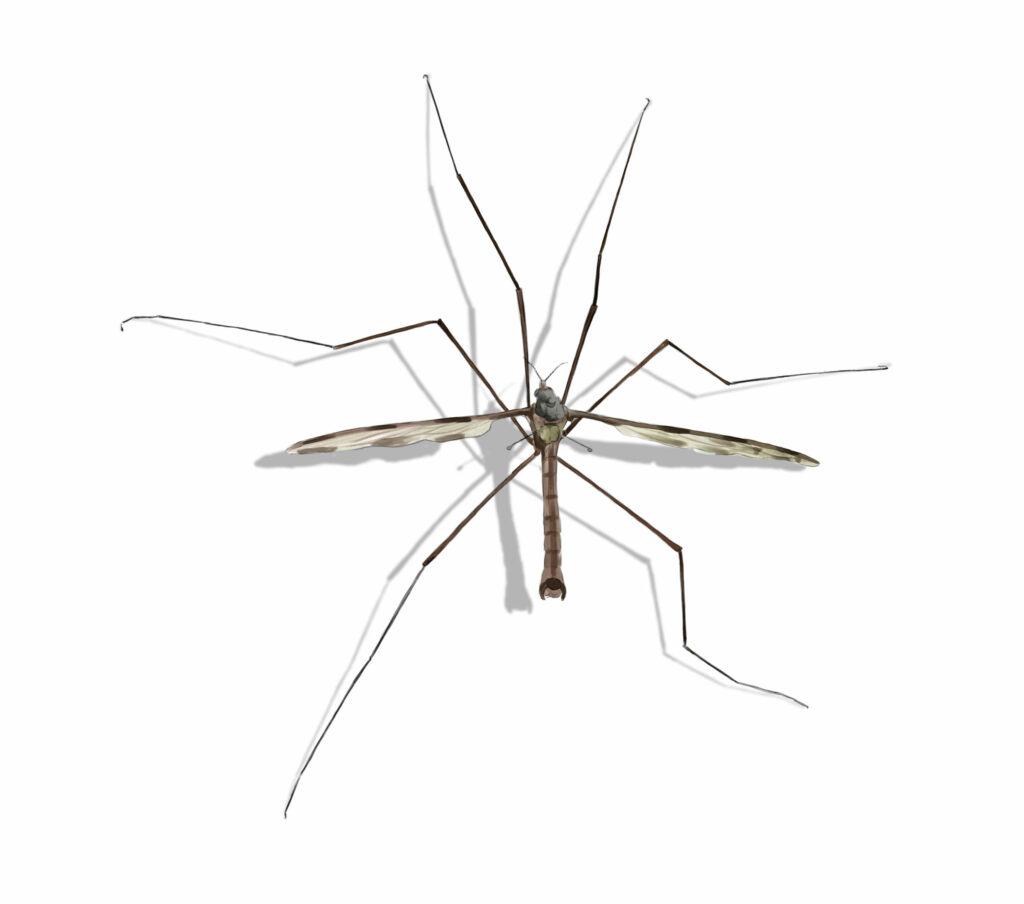
What do they do? Well, the adult crane flies don’t cause much trouble themselves. It’s their larvae, called leatherjackets, that cause damage. These little munchers live underground and feast on the roots of your grass. Before you know it, patches of your lush lawn can turn brown and look more like a patchy wasteland.
What Does Crane Fly Damage Look Like?
Crane fly larvae tend to stay hidden beneath the soil, so they can be tricky to spot until the damage is done. Here’s what to look out for:
- Yellow or brown patches: Those mysterious dead spots in your lawn could be thanks to leatherjackets munching on your grass roots.
- Loose turf: If the grass feels spongy or lifts up easily, the larvae might be feeding away right underneath.
- Increased bird activity: If birds are going crazy pecking at your lawn, they might be hunting for some tasty leatherjackets. Free lawn care from birds sounds nice—until you’ve got a torn-up yard!
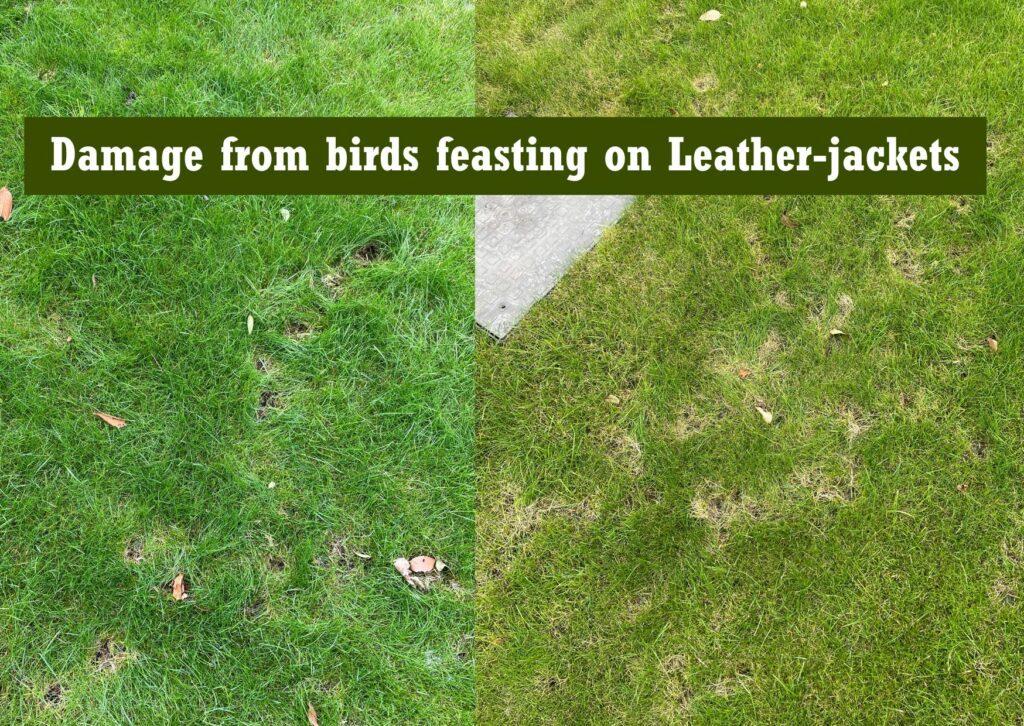
Keep reading: Daddy Longlegs (AKA: Crane Fly): The Impact They Cause On Your Lawn!
How Crane Flies Wreak Havoc on Your Lawn
Crane fly larvae can devastate your lawn in no time, especially if they’re left unchecked. They can chew away at the roots, causing large sections of your lawn to thin out, turn brown, and die off. And the worst part? This damage tends to show up right when you’re hoping for a healthy, green lawn.
During Autumn and early Spring, the larvae are at their hungriest, making it the prime time for damage. If left untreated, they can return year after year, turning your yard into a never-ending battle.
We’ve Got the Solution—But There’s a Catch!
At Joe’s Lawn Care, we’ve got a product that is 90% effective at dealing with crane flies—but there’s a small catch. Timing is everything! We only have a two-week window to apply the treatment each year for it to reach that impressive 90% success rate. It’s like hitting a bullseye—get it right, and those crane flies don’t stand a chance!
So, here’s the deal: crane flies start their party between August and October, popping up from the soil as adults. But don’t worry, they’re not around for long—just about two weeks. After a quick mating session, the females get right to work, laying up to 300 eggs all over your lawn. Fun, right?
Now, these adults aren’t exactly the strongest fliers. They only manage to go a few meters at a time, so you’ll usually spot them hanging out where their larvae are hiding. After about 2-3 weeks, the eggs hatch into larvae (aka leatherjackets) and that’s when the trouble begins! These little guys start munching on the roots and shoots of your grass and nearby plants.
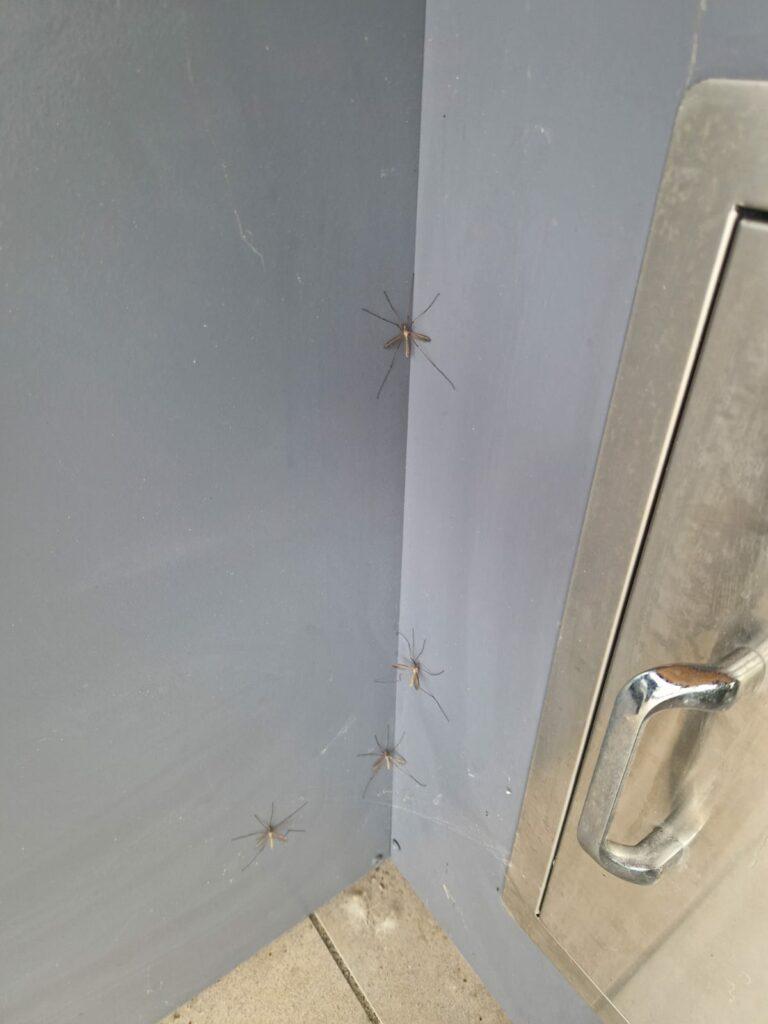
As Winter rolls in, they burrow deeper into the soil to stay cosy, surviving frosts up to 5cm below the surface. Fast forward to Spring, and they’re back with a vengeance, feasting on your lawn’s roots like there’s no tomorrow—this is when they do the most damage. By Summer, they retreat underground again to pupate, and the whole crane fly cycle starts all over.
Which is why we have a two week window to target these pests. We will treat just after the eggs hatch but before the larvae get a chance to wreak havoc and retreat underground before the temperature drops. We’ll work with you to make sure the treatment is applied at exactly the right time for maximum effectiveness.
And there you have it! Crane flies: the gift that keeps on giving… but not the kind you want!
How Joe’s Lawn Care Can Help
We know how frustrating it is to spend time and effort keeping your lawn looking its best, only for crane flies to undo all that hard work. That’s where we come in! Here’s how we’ll tackle the problem:
- Inspection: You can easily check by digging up a small bit of the grass and they will likely be there in the top few inches of soil. Or our team will visit your property to assess if crane flies are present and how severe the infestation is.
- Treatment: Once the perfect time comes, we’ll apply our super-effective treatment to stop crane flies in their tracks. If you have accepted a quote you will receive a notification just before we come and apply your treatment.
- Prevention: We’ll also give you tips and tricks to help prevent future infestations. Keep that lawn healthy and happy year-round!
Don’t Miss That Two-Week Window!
Remember, our 90% effective treatment relies on precise timing. The window is small, but the impact is huge. If you think crane flies are attacking your lawn, don’t wait until it’s too late. Give Joe’s Lawn Care a call, and we’ll schedule your treatment to make sure your garden stays lush and green, without any of those pesky leatherjackets digging in!
Say Goodbye to Crane Flies, and Hello to a Beautiful Lawn!
We’re here to help your lawn look its best all year round. Crane flies might be a nuisance, but with our expert treatment, we’ll help you tackle the problem head-on. After all, your lawn deserves the best, and at Joe’s Lawn Care, we’ve got just the thing to keep it looking lush and lovely!
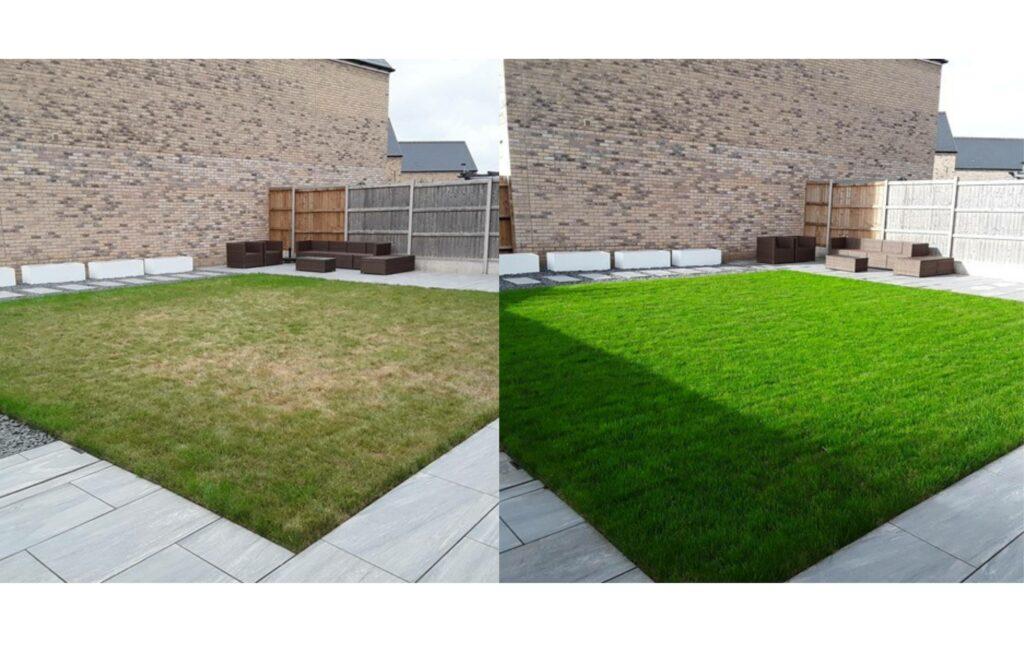
Need help with crane flies? Call us today to book your treatment! Let’s keep your lawn looking great, one daddy longlegs at a time!
Thanks for reading our blog ‘Daddy Longlegs (AKA: Crane Fly): The Impact They Cause On Your Lawn!’. For more lawn care tips and tricks, follow us on Facebook and Instagram.





